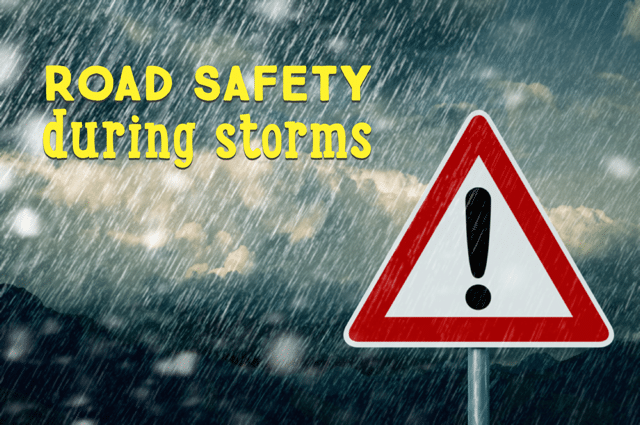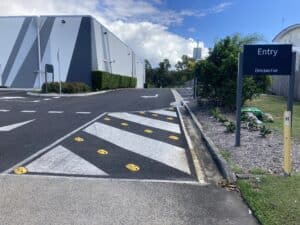

We all vividly recall the epic Brisbane storm on 27 November 2014. Every person you speak to has a story of how they were stuck in traffic, affected by hail damage, or witnessed unexpected occurrences such as trees crushing cars or bus windscreens being sucked out by the strong winds.
Storm season can be very scary if you are driving when the storm approaches. All too often, motorists are so focused on seeking shelter that they disregard general road safety rules and speed limits. It is important to remain calm and vigilant. Each weather condition also has its own unique set of safety requirements. So you need to be informed in order to know what to do in what conditions.
is unlikely to strike your car; however motorists often forget that lightning can easily strike trees that will then cause damage and driving risks. The additional risk of fallen power lines can be life threatening so extreme caution is required. While you are safe from being struck inside your car, ensure that you do not park your car under a tree or near any power lines. Rather drive cautiously to the nearest undercover shelter such as a bridge or shopping centre.
makes the road surface extremely slippery and diverts drivers’ attention from driving safely to seeking shelter as fast as possible. Driving in hail can be very frightening, but try to remember that most insurance companies will cover the damage, and your car is replaceable, whereas you are not. The safest option is to stop your car with your emergency indicators turned on. Everyone will be frantically trying to find shelter, and this – coupled with reduced visibility and slippery roads – makes for extremely hazardous driving conditions.
is often a more dangerous driving condition than heavy rain. While heavy rain makes the roads slippery and reduces visibility, the sudden downpour results in unexpected flooding of many roads. Do not ever attempt to drive through a flooded road. If you cannot find an alternate, safer diversion, then rather park your car and wait. Flooded roads often have potholes that cannot be seen which can result in your vehicle getting stuck. The other more severe risk of driving on flooded roads is underestimating the force with which the water is moving. The water can rapidly increase in velocity, resulting in your car being forced along with the pressure of the water.
can push your vehicle off course, causing collisions with other cars or stationary items. Strong winds also send a fury of debris everywhere. This reduces driving visibility and increases the risk of large items such as tree branches or dislodged poles being flung into your vehicle. The preferable option is to always park and vacate your vehicle, seeking shelter in the closest shop, and moving away from glass windows. Do not attempt to drive. If you are not located close to any shops or houses, park your car away from trees and bend down with your face covered in case any of the windows break.
We want you to be safe on the roads at all times. What is also very important to remember is that the risks are not only prevalent during the storm itself. Many weather conditions result in after-effects that can also be extremely dangerous for motorists. So even after the storm has subsided, you still need to drive cautiously. Listen to your local radio station for warnings of road closures, traffic congestion or any other hazards that should be avoided.



For 10 years, our focus has been on one thing: to provide one style of product and to do it well.
Our wheel stops, speed humps and rumble bars meet Australian Standards, don’t fade, and we’ve never needed to replace one.

For 10 years, our focus has been on one thing: to provide one style of product and to do it well.
Our wheel stops, speed humps and rumble bars meet Australian Standards, don’t fade, and we’ve never needed to replace one.